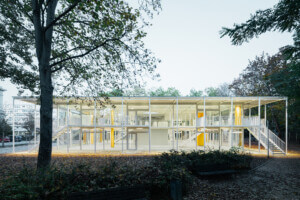In La Conner, Washington, a renovation of the local library was long overdue. The small, maritime town adjacent to the Swinomish Channel boasts a population of just 965 and neighbors the reservation of the Swinomish Indian Tribal Community. A history of colonialism and cultural differences have long separated the two communities abutting the local waterway. The La Conner Regional Library District tapped Seattle firm BuildingWork to design La Conner Swinomish Library, a new community asset that embraces the use of mass timber as means to be welcoming to both La Conner residents and the Swinomish.
A stroll through the historic downtown reveals low-lying buildings situated on small sites, but no shortage of 19th century-American vernacular elements: bay windows, wood cladding, and detailed cornices.
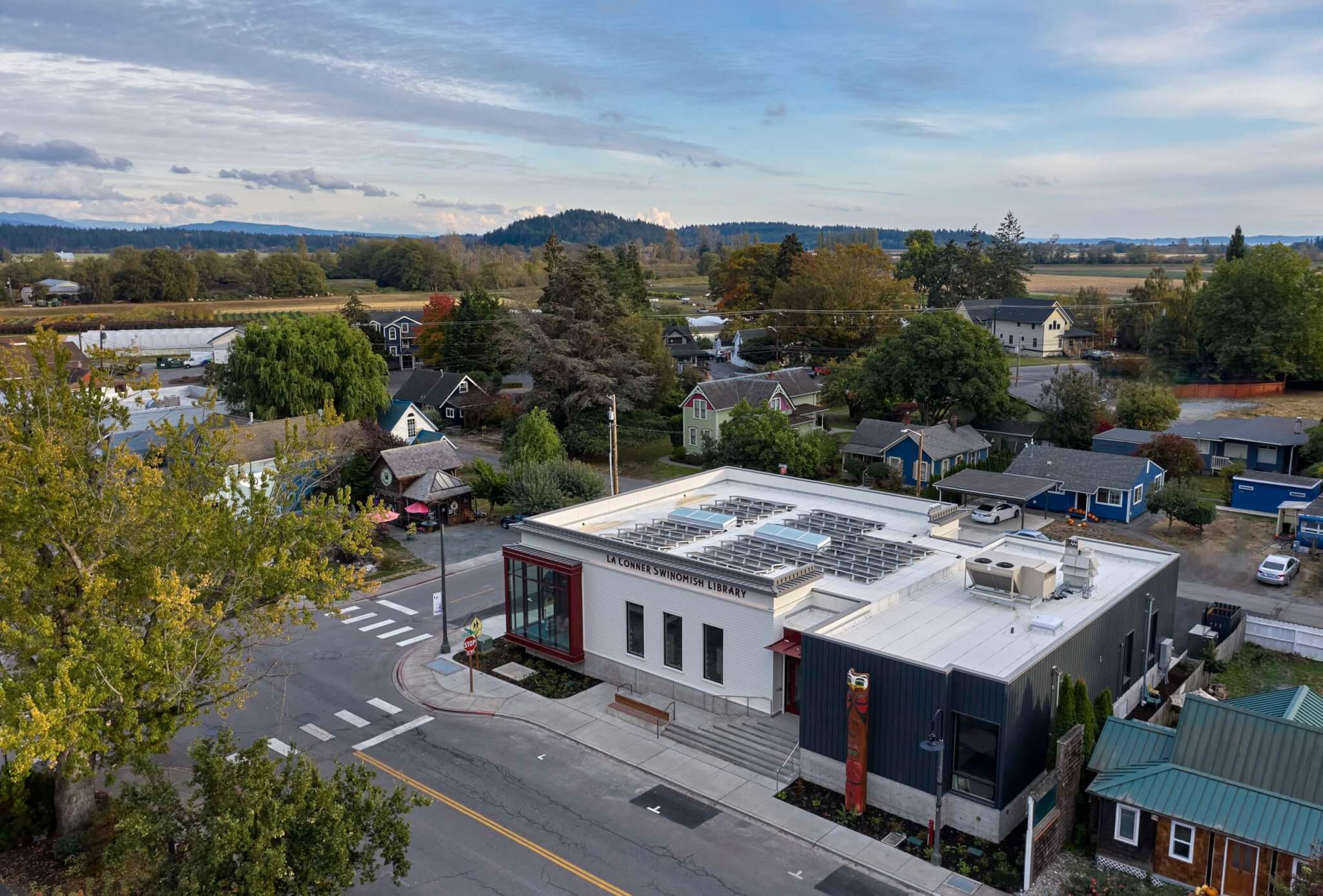
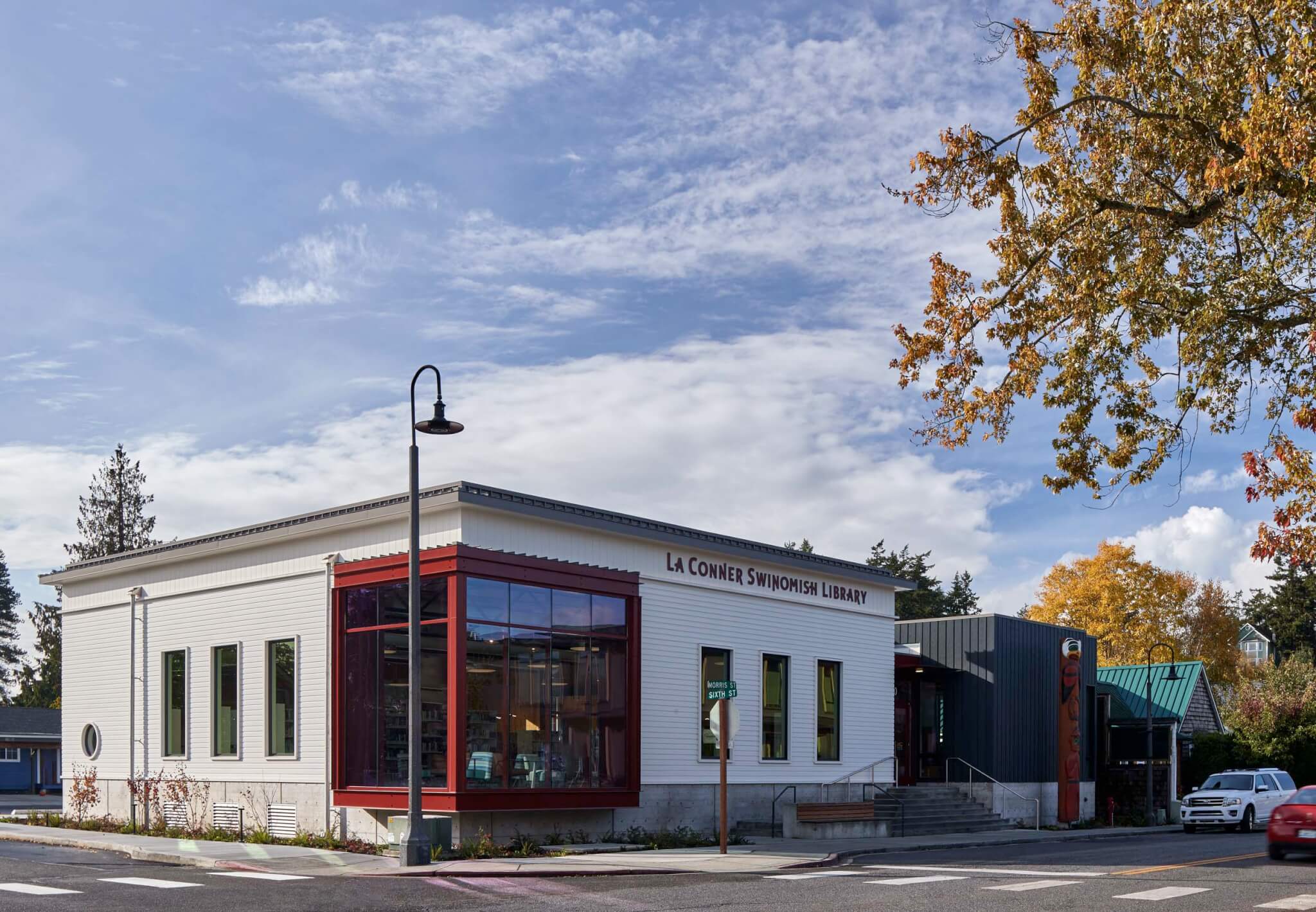
Given their historical significance, alterations made to buildings, new or old, are strictly governed: The town’s center is listed on the National Register of Historic Buildings. So, the design process for the new library began with research. BuildingWork drew on the history and buildings to inform the design for the new library. It became clear through the designers’ research that La Conner’s maritime past still holds strong cultural and material value. So, details like the use of clapboard wood siding and a 24-foot-long tugboat in the children’s library strengthen these connections. Outside, an 18-foot-tall cedar story pole also uplifts the indigenous histories of the Swinomish. Crafted by elder and master carver Kevin Paul and his son-in-law, the narratives carved into the trunk depict symbols from the Coast Salish culture.
La Conner Swinomish Library’s street-facing elevation can be read as two distinct volumes: a full-height bay window with a rusty red metal frame defines a corner, while much of the one-story building is formed by the two connected structures clad in wood. One features white siding and the other blackened wood paneling. The bay window offers views into the building’s interior where walls are clad with cross-laminated timber (CLT) panels. The CLT is made from douglas fir lumber sourced from Washington State.
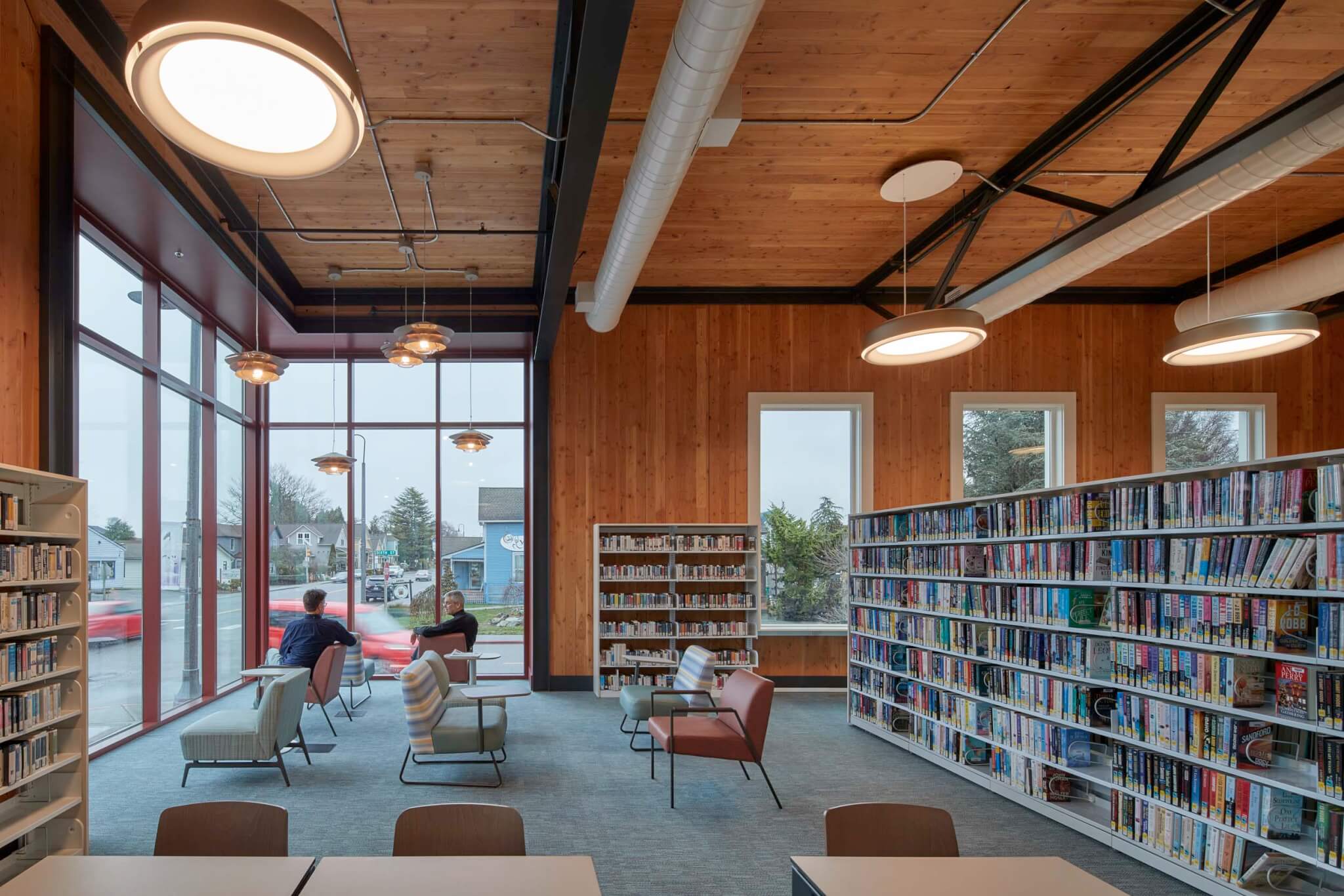
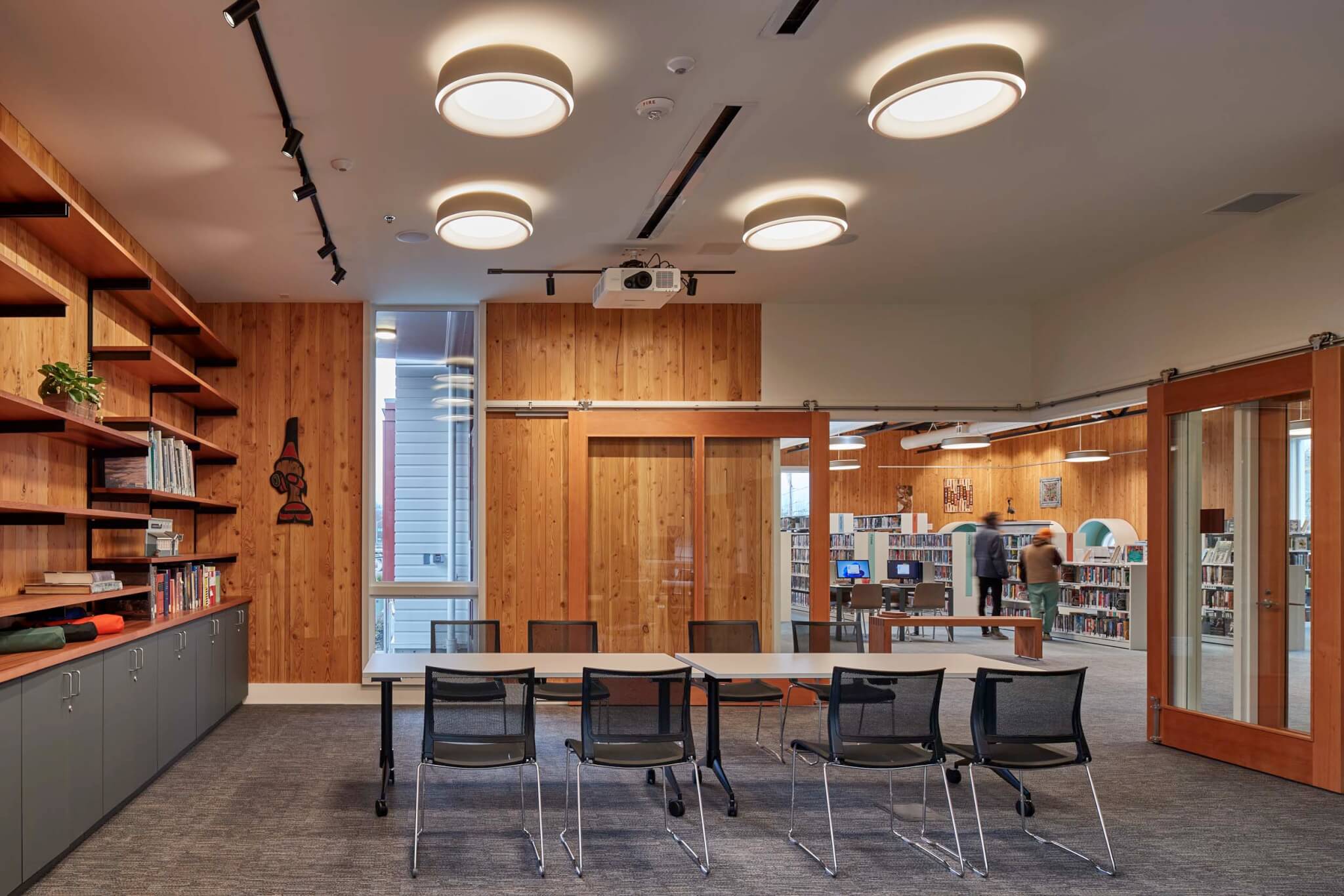
“The La Conner Swinomish Library may be one of the first publicly funded buildings to utilize CLT for the entire building structure, and this project demonstrates what this emerging construction technology can do,” said Matt Aalfs, principal architect and founder of BuildingWork. Aalfs also noted that using CLT cut construction time significantly compared to using standard wood frame construction.
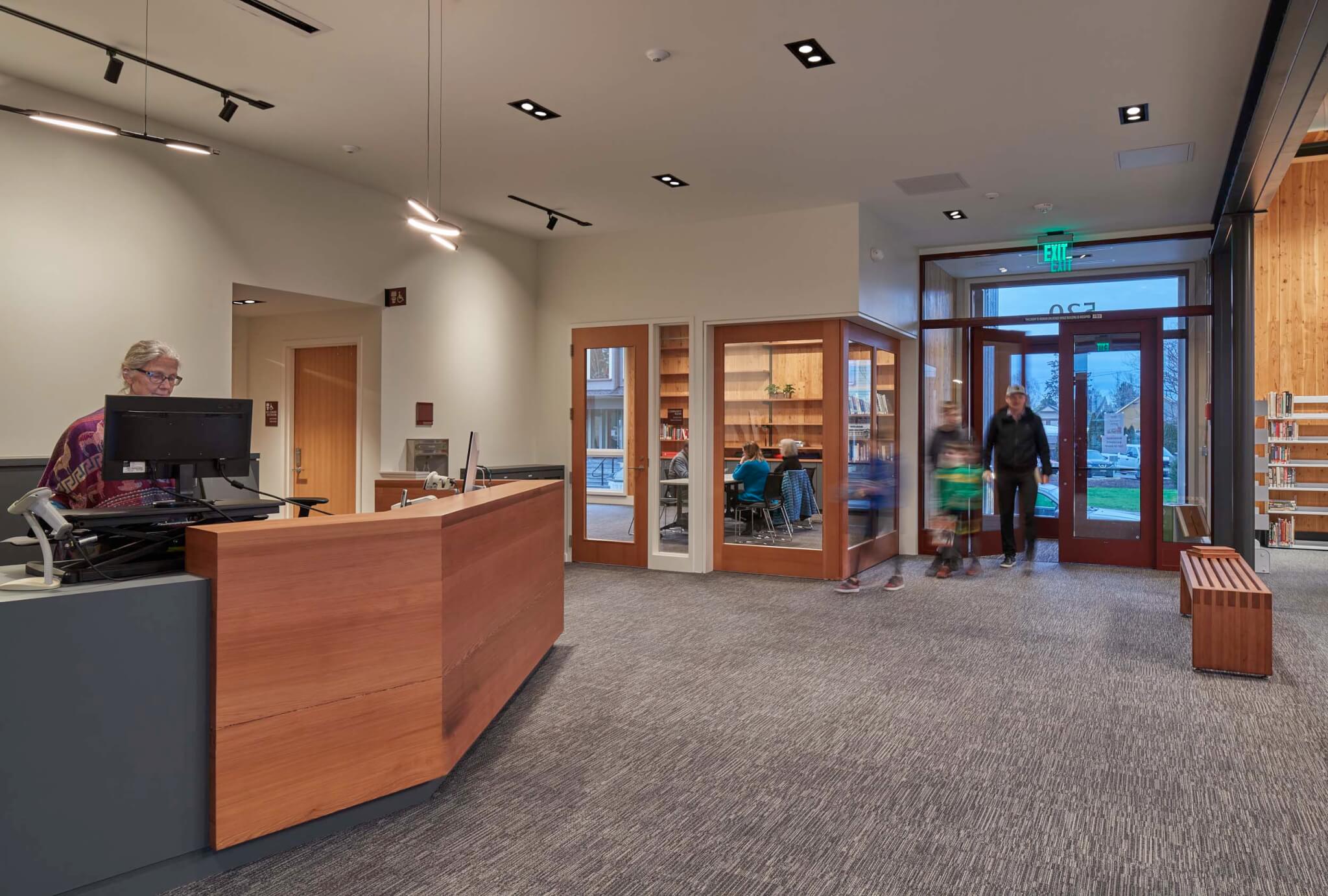
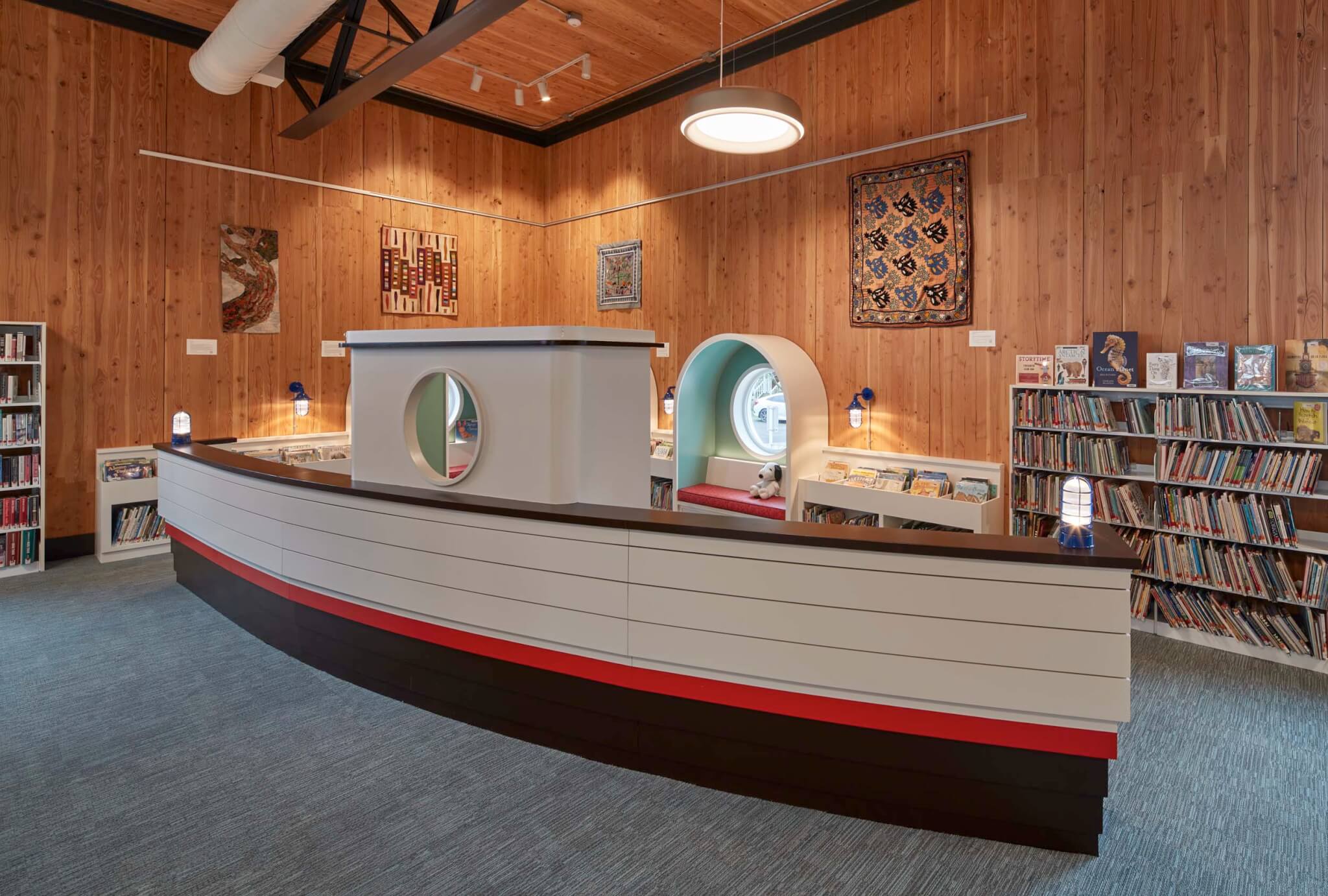
Other creative uses for wood in the project include using the scraps of the story pole for the circulation desk. Similarly, the bookshelves in the Meeting Room and a bench were fabricated by Stuart Welch, a local woodworker.
Project Specifications
-
- Architect: BuildingWork
- Client partner: Swinomish Indian Tribal Community
- Interior design: BuildingWork
- Landscape architect: Karen Kiest Landscape Architecture
- Civil and structural engineer: KPFF
- Mechanical engineer: The Greenbusch Group
- Electrical engineer: TFWB Engineers
- Envelope consultant: RDH Building Science








